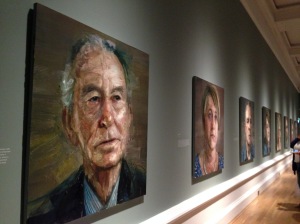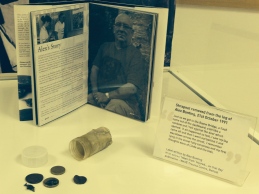I was privileged to speak at the launch of Vicky Cosstick’s insightful and challenging book about Belfast and the interfaces we live with and live around. Here is what I said and encouragement to purchase the book – http://www.amazon.co.uk/s/ref=nb_sb_ss_c_0_14?url=search-alias%3Dstripbooks&field-keywords=vicky+cosstick&sprefix=Vicky+Cosstick%2Caps%2C141
This is the time to be slow,
Lie low to the wall
Until the bitter weather passes.
Try, as best you can, not to let
The wire brush of doubt
Scrape from your heart
All sense of yourself
And your hesitant light.
If you remain generous,
Time will come good;
And you will find your feet
Again on fresh pastures of promise,
Where the air will be kind
And blushed with beginning.
― John O’Donohue, To Bless the Space Between Us: A Book of Blessings
With incisive skill John O’Donohue cuts through bricks and mortar to understand that there is a time for everything under heaven – a time to lie low to the wall until the bitter time passes and a time to find feet on fresh pastures, blushed with beginning. Vicky Cosstick’s book is of the same insight as she leads us through history, symbol, meaning and story to the challenges that are still with us in our divided and much loved City of Belfast.
I took a black taxi tour for the first time earlier this week. Our guide was informed and interested in the world that has been and the world that we are still building. I stood, as many have stood and as Vicky has stood, at murals and memorials, beside stone and tin and wire, and felt again the division, the safety, the fear, the challenge represented by wall after wall, interface after interface, site of division after site of division.
Something there is that doesn’t love a wall
writes the poet Robert Frost in Mending Wall. And something there is in Belfast that doesn’t love a wall. Quoting the work of Emily Ravenscroft Vicky addresses the ‘entrenched dialectical identities’ represented by walls and built into us by history and experience. ‘The resort to division’, as she calls it, began in 1866 with the separating wall built into the City cemetery to hold us to our separation in death as in life. Vicky charts the history of walls ending with the newest wall built in 2007 at Hazelwood College when minds were changing and turning towards new thinking as devolution approached and Sinn Fein announced their support for the PSNI. The dilemma of walls sits easily in that year with the building of a new wall on the one hand and the emergence of imaginative thinking to address those things that divide us on the other and now enshrined in the Together Building United Community Strategy with the commitment to bring down the walls by 2023. Frost too recognises the dilemma for not only is there something in us that doesn’t love a wall, there is something in us that believes
Good fences make good neighbours.
Over the years the dilemma has swung responses one way or another. In 1980 the Housing Executive began to face lift the walls thereby integrating them as something more acceptable to our society but also betraying a resignedness to the division, to the lying low to the wall as if the bitter time would never pass.
Yet we have found our way around and across the walls. The 1996 phone network allowed trusted community workers on either side of the walls to communicate with each other. The investment of the International Fund for Ireland’s peace walls programme has brought to light many ways in which people at community level have and are crossing, traversing the walls. Yet a challenge remains to find that place, blushed with beginning, in which hesitant light can extinguish division. I quote:
All the peace walls programmes have discovered that ultimately it is relationships and conversations that make change happen… Community workers have developed a shared understanding…. Ultimately it is the actual experience of having a barrier removed, of being in a more normal environment, that is likely to alter the dynamic within a given community from the self-reinforcing ‘vicious circle’ into ‘virtuous circle.’
Relationships and conversations. They make the difference. Vicky acknowledges walls as ‘the debris of the unfinished peace process’ and unearths the debris of trauma, community engagement, leadership failure, separation of the churches from community relations organisations, declining Protestant working class neighbourhoods, the constraints on economic investment and the limitations of political tourism. With skilful art she describes the architecture of a community on a journey to something better and she reminds us of the journey we have already made, that often painstaking journey to reduce violence and build relationships. She pays tribute to those who have followed the route of conversation and relationship,
… building unusual relationships with and among others, crossing boundaries at risk to themselves.
It is stirring to read those familiar names – Suffolk, Lenadoon, Cupar Way, Duncairn, Bryson and to call back to mind the human tragedy and suffering held in memory and represented in walls. Yet Vicky doesn’t overwhelm us in her challenge but encourages us to use again that which is familiar to us, that which we know how to do well. She writes:
This is how change happens: through small steps forward and sometimes back, through synergistic relationships, serendipity, through ‘emergence’: patterns of apparently unrelated but coincident events bubbling up across a complex system. Through fleeting moments in private and group conversations virtually impossible to track or record. Through people noticing, listening, echoing.
This strategic direction, this way of working, is familiar to us but, as people who have laid low to the walls, we may lose our strategic vision of a City without Walls. That is, until we read this book which inspires and challenges, traverses its way around academics, politicians, community leaders, church people, people living at the walls and people working around the walls and brings to our minds our love for this place. Vicky has traversed this divided society with incredible ease which is, in no small measure, due to her smile, her straightforwardness and her comfortable presence among us. I could see the wideness of her smile and hear her clean cut Englishness betraying her surprise as she wrote:
Interfaces may be ritualised to an extraordinary degree – in White City there are said to be segregated bus stops…
Ritualised division and separation will take some time to undo. 2023 may be something of an ambitious target. Yet Vicky tells us we need not be overwhelmed or disabled by the presenting task – remember conversation and relationships. In his own poetic way John Paul Lederach puts it like this in his forward to the book:
The journey toward a city without walls will require fissures and cracks, windows and gateways, pebbles and a few weedy vignettes that crumble the long arc of stone-laid history.
I thank Vicky for telling that unwritten story which is so difficult to recount, the story of conversations and relationships, of many unsung heroes and heroines, a story blushed with beginning.
If you are feeling at all weary in making peace or uncertain of what to do next then this book is for you. If you are in need of inspiration or of something to lift your spirit then this book is for you. Thank you Vicky for becoming part of our lives and for showing us ourselves and who we have yet to become.













